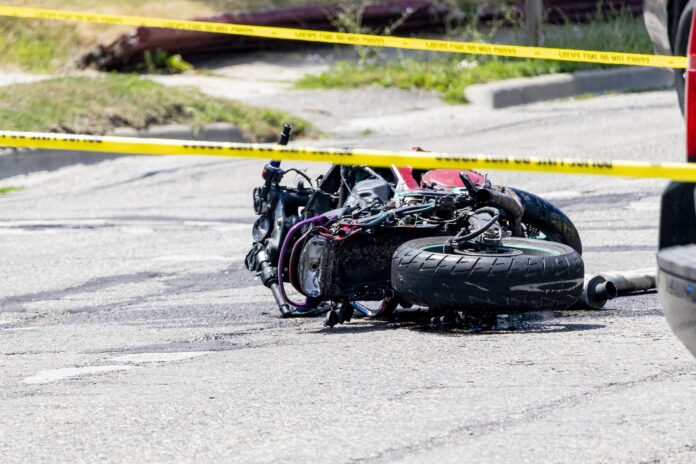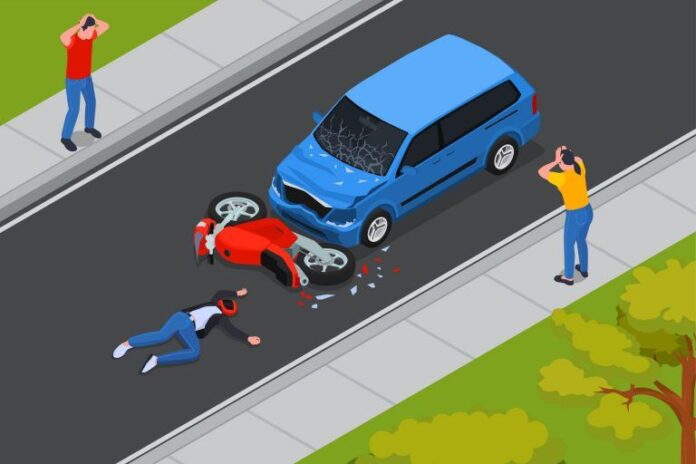A motorcycle is one of the most dangerous mediums of transportation. A minor mishap can result in severe outcomes. Mainly because a motorcycle is small compared to other vehicles.
In 2015, the most recent year for which data is available, there were 4.3 million people injured in motorcycle accidents, an average of almost 86 thousand a day, and nearly 3% of all vehicle-related deaths. This makes motorcycles the fifth most deadly terrain on US roads, behind cars, pedestrians, trucks, and SUVs.
Here are 8 statistics and facts you need to know about motorcycle accidents:
1. Motorcyclists are More Likely to Die in accidents than Passengers in Cars

According to 2019 reports, motorcyclists have 30 times more risk of dying in crashes than car passengers. This is because almost all other vehicles are bigger than a motorcycle. In addition, most bike lovers like to drive fast. To fulfil the customer needs, the manufacturing companies also design the bikes in a way to reach high speeds. One of the things they need to do is design the bike with lightweight materials. So, when the biker collides with something like a car at high speed with comparatively weaker parts, the biker is the most probable one to die.
2. The Majority of Accidents Happen in Broad Daylight
Nearly 2 thirds of all motorcycle accidents occur during the daytime. The most dangerous time to be on a bike is between 5 am and 7 pm when you are at the highest risk of being in multiple crashes within 24 hours. This was predominantly due to rider error, such as failing to check blind spots and darkness. One might expect that most accidents will occur at night, but in reality, most bike accidents take place in daylight. The reason for this is most bikers will drive slower and with more caution in night time due to the lack of light. In contrast, they will feel safe enough to drive fast in the daylight, which ends up bad for them.
3. Fatal Accidents are Not Usually Caused by Speed
Most crashes involving motorcycles result from the driver failing to keep pace with the motorcycle. It’s worth noting that the average speed of this type of accident is just 19 miles per hour. However, speeding was correlated with risk in over 70% of all accidents, which can be due to distraction or another factor not accounted for in these statistics. Bikes can go at high speed. That doesn’t necessarily mean speeding is the reason for accidents. As said, even a minor mishap can lead to fatal accidents. Bikers who are not wearing a helmet are prone to head injuries.
4. Motorcycle Helmets Lower the Risk of Fatalities and Head Injuries

According to the National Highway Traffic Safety Administration (NHTSA), helmets reduce fatality rates by 35% and brain injuries by 69%. In a near-identical report by Motorcycle Cruiser, the numbers were even more promising. This was for all registered motorcycles, not just those used for personal transportation. Motorcycles being used for farming, construction, or other commercial purposes have lower fatality rates even without helmets than cars or trucks when they are also involved in accidents. Wearing a helmet is always the safer option. In some states, it is not mandatory to wear a helmet if you are above 21. But just because there is a rule, it doesn’t mean you shouldn’t wear a helmet. Wearing a helmet can save your life at crucial times.
5. Head-on Collisions are the Prevalent Causes of Injuries
More than half of all motorcycle accidents in the United States occur this way, with motorcyclist fatalities rising 5% over the past decade. Motorcycle collisions with cars account for nearly 40% of all motorcycle accidents and most of the deaths yearly. Cars not signalling is a reason for this. In addition, bikers are sometimes too slow to react to the oncoming traffic. A biker should avoid driving on the wrong side of the road since it can be very dangerous. A head-on collision with a car is incredibly dangerous for the biker than the car. A bike almost has zero insurance.
6. Motorcycles Accidents are the Least Preventable Type of Traffic Accident
According to a study by NHTSA, motorcycles are involved in approximately 535,000 crashes yearly. The statistic is set by speed and driver distraction, which can make motorcycle crashes among the least preventable type of traffic accidents. Motorcycle accidents can be prevented only by drivers. A biker must take an oath to themselves to drive at a safe speed. It is every biker’s responsibility to make the road a safer place for them and others.
7. The Average Age of Motorcycle Riders is 39

The average age of a person riding a motorcycle varies from state to state, with the lowest being in Vermont at 41 and the highest in California at 45. This is primarily because many first-time riders are younger and more inexperienced on motorbikes, making them more vulnerable to accidents. Bikes are loved by young people. In addition, young drivers are more likely to crash. The inexperience in the young drivers causes them to crash. As the person age, they grow more responsible and drive safely.
8. Most Motorcycle Accident Victims are Male
According to the National Highway Traffic Safety Administration, 83% of all motorcycle fatalities in 2015 were men. However, this estimate is likely the same for motorcycle crashes and car accidents. The reason for this is most motorcyclists are male. More than 90% of motorcyclists are male. That is why most victims of motorcycle accidents are male. In fact, in motorcycle accidents, most passenger victims are female.
Conclusion

Motorcycle accidents are common and preventable. However, many motorcyclists choose to drive without a helmet or proper protection. If you or someone you know is hurt in a motorcycle accident, consider seeking legal counsel from an experienced lawyer. Louthian Law Firm has outstanding and professional help. A motorcycle crash can be a serious matter and warrants immediate assistance from an attorney. Click here to learn more about motorcycle accidents.









